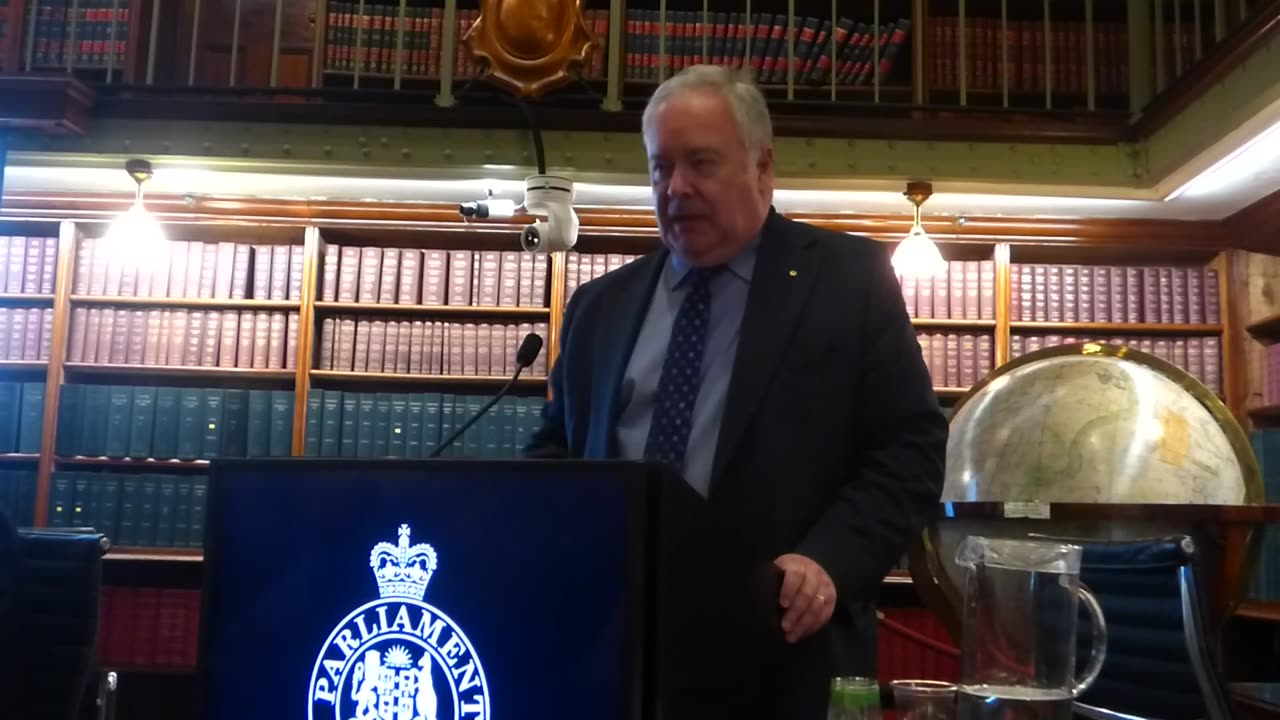Premium Only Content

Mr Peter Jennings AO: Australia's Defence Preparedness
SUMMARY:
------------------------------
I was genuinely energised by Mr Peter Jennings AO’s short, sharp briefing on defence preparedness — he cuts through the noise and lays out a clear, pragmatic view of three overlapping conflicts shaping security today. Jennings focuses first on Israel and Gaza, arguing the next phase will likely be targeted, intelligence-driven missions to go after Hamas leadership and rescue hostages, while warning the much larger risk lies to Israel’s north from Hezbollah in southern Lebanon. He tracks Iran’s behaviour — direct strikes that underperformed and a likely pivot back to proxy warfare across the region — and highlights how Russia and China factor into that strategic picture. Throughout he grounds his analysis in the Australian context, prompting listeners to think about how our strategic outlook and defence posture should adapt. It’s a measured, experienced take that’s equal parts military realism and geopolitical clarity — essential viewing for anyone interested in regional security and what it means for Australia.
RUMBLE DESCRIPTION:
-----------------------------------
Peter Jennings AO delivers a concise, no-nonsense briefing on defence preparedness and the shifting strategic landscape in the Middle East — and why Australia should be paying attention. In roughly 20 minutes Jennings covers three interconnected conflicts and the implications for regional and Australian security. He begins with Israel and Gaza: Jennings expects rather limited, intelligence-led operations aimed at Hamas political leadership, hostage rescue and remaining military brigades, but warns the more serious potential escalation is from Hezbollah in southern Lebanon. He explains how 100,000 Israelis have relocated from the north and why that demonstrates the existential nature of the threat for Israel.
Jennings then discusses Iran’s role as the principal sponsor of proxy groups across Gaza, Lebanon, Yemen and Syria, and why Tehran is likely to lean back on proxies after direct strikes failed to achieve their aims (his assessment notes very high interception rates). He ties these developments into a broader great-power backdrop — Russia and China as important enablers — and teases out what this means for Australia’s strategic posture.
This talk is grounded, practical and delivered with the clarity you want from an experienced defence analyst. If you’re interested in contemporary conflict dynamics, hostage-rescue operations, proxy warfare, and why Canberra needs to consider these trends in its defence planning, this video is for you. Like, comment and subscribe for more briefings and analysis.
⚠️ CONTENT DISCLAIMER ⚠️
The views, opinions, and statements expressed in this video are those of the individual speaker(s) and audience members. They do not necessarily reflect the views, opinions, or positions of Western Heritage Australia or its affiliates.
This content is presented for educational and informational purposes as well as to facilitate public discourse on important social and political issues. We provide a platform for diverse Australian voices to be heard, to assist the public in forming their own informed opinions.
Western Heritage Australia does not endorse, verify, or take responsibility for the accuracy of statements made by speakers. All claims, statistics, and opinions remain the responsibility of the original speaker. Viewers are encouraged to conduct their own research and consult multiple sources when forming opinions on these topics.
This video may contain strong political opinions, controversial viewpoints, strong language, or mature themes. Viewer discretion is advised.
-
 2:32:08
2:32:08
THOUGHTCAST With Jeff D.
3 hours ago $2.62 earnedSunday Night FORTNITE with THOUGHTCAST Jeff D & crew.
19.8K4 -
 55:10
55:10
The Mel K Show
11 hours agoMel K & Mike L | The Tylenol Piece: It's a Marathon, Not a Sprint | 10-19-25
86.8K12 -
 3:17:37
3:17:37
MrMoBetta13
4 hours ago $1.80 earnedCFB26 CUT Ranked + NEW NIGHTMARE CARDS and talking college football!!
15.2K8 -
 LIVE
LIVE
Spartan
7 hours agoOMiT Spartan | God of War Ragnarok and then Halo
66 watching -
 3:19:39
3:19:39
FusedAegisTV
1 day agoλ Black Mesa λ (Half Life 1 Remake) █ Western Retread
17.1K2 -
 40:22
40:22
MattMorseTV
5 hours ago $28.04 earned🔴They just tried it... AGAIN.🔴
25K58 -
 2:08:52
2:08:52
Nerdrotic
7 hours ago $16.97 earnedUncovering Egypts Greatest Mysteries w/ Hugh Newman| Forbidden Frontier #121
103K9 -
 2:25:58
2:25:58
vivafrei
13 hours agoEp. 287: Bolton INDICTED! Gaza Ceasefire BREACHED? Alex Jones Injustice Continues, ANTIFA & MORE!
114K157 -
 16:16
16:16
Robbi On The Record
8 hours ago $6.61 earnedThe Dark History of Halloween | What You Should Know
26.4K14 -
 5:19:21
5:19:21
DHG
23 hours agoRE4R - BIORAND X3 ENEMY MULTIPLIER MOD - PROFESSIONAL
18.3K1